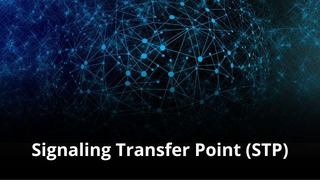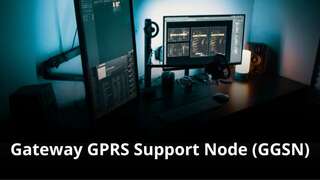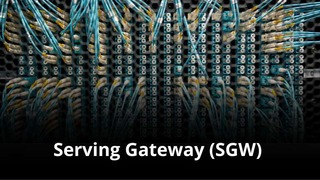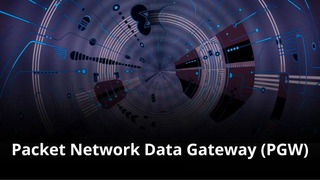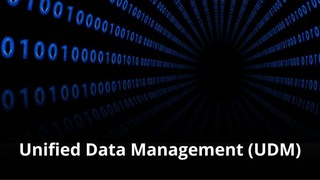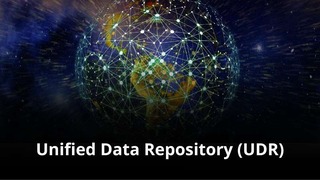Introduction about the Packet Data Network Gateway (PGW)
The Packet Data Network Gateway (PGW) is a highly evolved and pivotal component within the core network architecture of 4G Long-Term Evolution (LTE) systems. It acts as the anchor point for all user data traffic, serving as the essential interface between the mobile operator’s network and external packet data networks, such as the internet. Understanding the PGW is crucial for grasping how modern mobile broadband services are delivered, managed, and financially controlled.
What are the details of an Packet Data Network Gateway (PGW)?
- History and Evolution of the Packet Data Network Gateway
- Core Utility and Functionality of the PGW
- Technical Integration and Data Model
- PGW Ownership for MVNOs and IoT Companies
- Organizational Impact of PGW Ownership?
- Redundancy and High Availability
- Impact of 4G, 5G, and 6G on the PGW
- Frequently Asked Questions about the PGW
- Summary
History and Evolution of the PWG
The Packet Data Network Gateway (PGW) emerged during the migration from 2G/3G networks to 4G (LTE). Its functionality is a direct evolution of the older Gateway GPRS Support Node (GGSN). While the GGSN was a single entity, the design of the LTE core (the Evolved Packet Core or EPC) introduced a split between the user plane and the control plane for better scalability and performance. Consequently, the GGSN’s responsibilities were divided between the Serving Gateway (SGW) and the PGW. The PGW specifically took over the role of IP anchor and interface to external networks. This evolution was necessary to handle the massive growth in mobile data traffic and enable new policy controls. The evolution is:
Core Utility and Functionality of the PWG
What is the PWG Used For?
The Packet Data Network Gateway (PGW) serves as the final, critical point of aggregation and policy enforcement for all user data sessions. Its primary use is to guarantee the seamless maintenance of the user’s IP address and session context. This is maintained even as the user moves across different access technologies (e.g., from LTE to Wi-Fi). It is the network element that connects the mobile subscriber’s session to the internet. Implementing a PGW is necessary to ensure consistent user experience, apply data charging rules, and safeguard the network.
Key Functions of the Packet Data Network Gateway
Investigate the core functions of the Packet Data Network Gateway (PGW) to understand its pivotal role in data management:
- Mobility Anchor: It maintains the user’s IP address and session context as the device moves between different access points.
- IP Address Allocation: The PGW dynamically or statically assigns an IP address to the user’s device (User Equipment).
- Policy Enforcement: It enforces Quality of Service (QoS) and policy rules received from the Policy and Charging Rules Function (PCRF).
- Packet Filtering: It filters data packets based on network operator policy, providing a firewall function.
- Per-User Packet Inspection: It enables deep packet inspection (DPI) for traffic classification and lawful interception.
- SGW/PGW Tunnel Termination: It terminates the GTP tunnels carrying user data from the Serving Gateway (SGW).
- Online Charging Interface: The PGW interacts with the Online Charging System (OCS) for real-time credit control and balance deduction.
- Inter-operator Connectivity: It serves as the gateway for roaming subscribers connecting to external networks.
- Charging Data Record (CDR) Generation: The PGW generates accurate records of data volume, session duration, and usage time for billing.
Technical Integration and Data Model
The Packet Data Network Gateway (PGW) is the most interconnected node in the EPC data path. Examine its key integration points to appreciate its gatekeeper role. It connects to the Serving Gateway (SGW) using the S5/S8 interface (GTP-U) to receive user data. It interfaces with the Policy and Charging Rules Function (PCRF) using the Gx interface (Diameter) to receive policy and charging rules. The PGW also uses the Gy interface (Diameter) to communicate with the Online Charging System (OCS) and the Gz interface to the Offline Charging System (OFCS). Finally, its output, the SGi interface, connects it directly to external packet data networks like the internet.

Technical Data Model and Key Interfaces
The Packet Data Network Gateway (PGW) manages a comprehensive Technical Data Model. This model tracks all active data bearers, their associated QoS levels, assigned IP addresses, and charging identifiers for millions of simultaneous users. The model must be highly resilient and transactionally secure. Key interfaces utilized by the PGW are:
- S5/S8 (GTP): Used for connecting to the SGW (S5 within the home network, S8 for roaming) to transport user data and signaling.
- Gy/Gz (Diameter/GTP’): Used for charging data exchange with the OCS (Gy) and OFCS (Gz).
- SGi (IP): The main interface connecting the PGW to the outside world, acting as a standard IP router.
- Gx (Diameter): Used for policy and QoS rule exchange with the PCRF.
PWG Ownership for MVNOs and IoT Companies
Why Own an PWG?
For a Mobile Virtual Network Operator (MVNO) or an IoT company, owning a dedicated Packet Data Network Gateway (PGW) is the cornerstone of their technical control. Consider that the PGW is where all data policy and monetization decisions are executed. Owning it allows these companies to bypass the host MNO’s constraints. This grants them the freedom to create unique, high-margin, and highly customized data services tailored to their specific market niche.
Advantages and Disadvantages of PWG Ownership
Complete Control over IP address space and data routing to specific services.
Flexible Policy Creation for unique Quality of Service, speed caps, and content filtering.
Faster Service Deployment of new data plans without relying on the host MNO.
Direct Policy & Charging Integration with own BSS/OSS for real-time billing.
Granular Traffic Control essential for specialized IoT connectivity and monitoring.
Prohibitive Cost for initial purchase, installation/setup, and software licensing.
Extreme Technical Complexity requiring deep expertise in EPC, Diameter, and GTP.
High Operational Risk since it is a single point of failure for all data services.
Integration Challenges with the host MNO’s SGW, requiring complex inter-operator agreements.
Regulatory Burden related to lawful interception and data retention obligations.
Organizational Impact of PWG Ownership
Analyzing the organizational impact of owning a Packet Data Network Gateway (PGW) across various business units.
Operational Impact: Requires the establishment of a highly skilled core network engineering team. This team must maintain 99.999% uptime, manage load balancing, and troubleshoot complex data session failures. Mandate adherence to strict change control procedures for all policy and routing updates.
Financial Impact: Evaluate the significant upfront capital expenditure (CapEx) for hardware and software, plus the ongoing OpEx for maintenance and energy. Ownership requires treating the PGW as a critical revenue-generating asset, necessitating careful capacity planning.
Commercial Impact: Leverage the PGW’s capabilities to offer highly differentiated service products, such as “free social media data” or “enterprise-grade quality of service” guarantees. This enables strong market segmentation and competitive pricing.
Technical Impact: Mandates the end-to-end responsibility for data security at the network border, including firewalling, denial-of-service (DoS) protection, and lawful interception enablement. The company must manage all peering agreements and routing policies.
Redundancy and High Availability

The Packet Data Network Gateway (PGW) is the anchor for all mobile data; therefore, Redundancy and High Availability (HA) are paramount. Implement a geo-redundant, N+N clustered architecture with active-active load sharing across multiple physical sites. This design ensures that a failure in one location does not result in the termination of active user sessions. The system must employ robust signaling mechanisms to enable the automatic and rapid relocation of user traffic to a working PGW. Ensure that the hardware and software are configured to support stateless operation wherever possible to improve failover speed.
Impact of 5G and 6G on the PGW
PGW’s Transition
In the 5G core network, the functions of the Packet Data Network Gateway (PGW) are largely absorbed by the User Plane Function (UPF) and the Session Management Function (SMF). The UPF handles the user data plane, packet routing, and forwarding (the “gateway” part). The SMF manages the session, IP address allocation, and policy interaction (the “control” part). Adopt these new elements to leverage virtualization and cloud-native architectures. The PGW remains in operation to ensure seamless interworking between 4G and 5G networks.
6G’s Vision
As 6G technology emerges, Anticipate that the functions derived from the PGW (UPF/SMF) will be even more distributed and decentralized. They will be placed far closer to the network edge to facilitate ultra-low latency services like holographic communication and real-time machine control. The core role of anchoring the user session and enforcing policy, however, will continue to be a necessary, albeit highly virtualized, function.
Frequently Asked Questions about the Packet Data Network Gateway (PGW)
1. What is the primary role of the PGW in the LTE network?
The primary role of the PGW is to be the final IP anchor point for the mobile user’s data session. It connects the 4G core to the external internet and enforces all policy and charging rules.
2. How does the PGW interact with the PCRF?
The PGW interacts with the PCRF (Policy and Charging Rules Function) over the Gx interface (Diameter). The PCRF tells the PGW how to treat the user’s traffic (e.g., speed, priority, allowed content).
3. What protocol is used to tunnel data to the PGW?
User data is tunnelled to the PGW from the Serving Gateway (SGW) using the GPRS Tunnelling Protocol – User Plane (GTP-U) over the S5/S8 interfaces.
4. How does the PGW handle a user's IP address?
The PGW is the key entity that allocates a unique IP address to the mobile device when the data session (bearer) is established, thereby allowing the device to send and receive internet traffic.
5. Is the PGW used for voice calls?
For modern Voice over LTE (VoLTE) calls, the PGW carries the voice data encapsulated in IP packets, as the voice service itself is an IP-based data session anchored at the PGW.
Summary
The Packet Data Network Gateway (PGW) is the indispensable gateway and anchor for all mobile data in 4G LTE networks, acting as the interface to the public internet. Owning a PGW grants MVNOs and IoT companies essential strategic control over data policy, QoS, and monetization, allowing for differentiated market offerings. This decision, however, entails significant capital expenditure and a high demand for specialized core network expertise. While its functions are being virtualized and separated into the UPF and SMF in 5G and 6G, the PGW’s fundamental mission as the data policy enforcement point remains absolutely critical.
